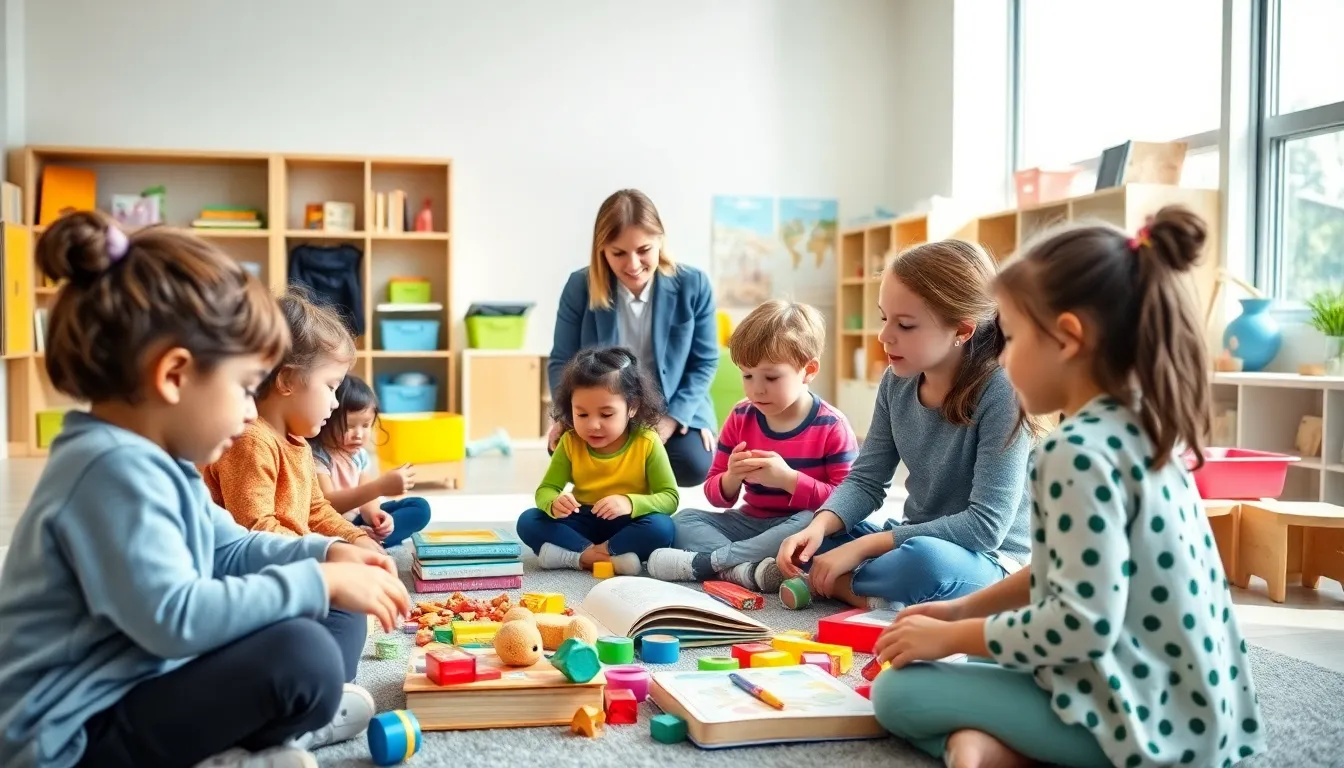Table of Contents
ToggleIn a world that’s more connected than ever, cross-cultural language learning isn’t just a trend; it’s a necessity. Imagine ordering a coffee in Paris without accidentally asking for a “petit chien” instead of a “café crème.” Awkward, right? Learning a new language opens doors to not just communication but also understanding diverse cultures, breaking down barriers, and even making friends who can teach you the secret to perfecting that French accent.
Understanding Cross-Cultural Language Learning
Cross-cultural language learning embodies more than language acquisition; it facilitates deep cultural exchanges. Engaging with a new language opens doors to understanding traditions, customs, and worldviews unique to different cultures. Mastery of a language enhances the ability to connect meaningfully with native speakers, allowing for nuanced conversations.
Cultural understanding plays a pivotal role in effective communication. Familiarity with idioms, gestures, and context-based expressions yields insights that mere vocabulary cannot provide. Recognizing these elements can prevent misunderstandings and foster a sense of trust among interlocutors.
Language learning contributes to breaking down societal barriers. It challenges stereotypes while promoting empathy and appreciation for diversity. Immersing oneself in another language cultivates skills necessary for navigating complex social dynamics and fosters friendships grounded in mutual respect.
Furthermore, collaborative language exchanges enrich learners’ experiences. Participating in language groups or partnering with native speakers allows individuals to practice while receiving immediate feedback. This dynamic learning approach encourages a supportive environment, essential for personal growth and confidence.
Lastly, resources for cross-cultural language learning abound. Online platforms, interactive apps, and community classes provide diverse opportunities to enhance language skills. Utilizing these tools not only promotes fluency but also deepens cultural ties and broaden perspectives in an increasingly globalized society.
Benefits of Cross-Cultural Language Learning

Cross-cultural language learning offers numerous advantages that extend beyond language skills. Key benefits include cognitive enhancements and increased social and cultural awareness.
Cognitive Advantages
Learning a new language sharpens cognitive abilities. It strengthens problem-solving skills and improves memory retention. Studies show that bilingual individuals often outperform monolingual peers in tasks requiring multitasking and critical thinking. Language learners also show enhanced creativity, as they approach problems from multiple cultural perspectives. Moreover, acquiring a language can delay the onset of age-related cognitive decline, proving beneficial for long-term brain health.
Social and Cultural Awareness
Engaging in cross-cultural language learning fosters deeper social connections. Individuals gain insight into diverse cultural norms, traditions, and values. This understanding helps break down stereotypes and promotes empathy among learners and native speakers. Conversations with people from different backgrounds often reveal unique worldviews, enriching one’s perspective. Collaborative language learning environments encourage respect for cultural differences, leading to more meaningful relationships. As a result, students learn to navigate social contexts adeptly, enhancing their global citizenship.
Challenges in Cross-Cultural Language Learning
Cross-cultural language learning presents unique challenges that learners must navigate to achieve proficiency.
Language Barriers
Language barriers pose significant obstacles in communication. Mispronunciations or incorrect syntax can lead to confusion. Limited vocabulary restricts expression, making it hard to convey thoughts or emotions accurately. Different linguistic structures affect comprehension and fluency. Listening skills also require refinement, as accents and dialects may differ remarkably. Effective communication demands practice and exposure to native speakers. Engaging in conversations with others helps overcome these challenges. Research indicates that immersive experiences can enhance language acquisition. Regular interaction allows learners to adapt to natural speech patterns, ultimately improving their language skills.
Cultural Misunderstandings
Cultural misunderstandings frequently occur during cross-cultural interactions. Unfamiliarity with cultural norms can lead to unintentional offenses. Contextual nuances in language may not translate directly, resulting in misinterpretation. Understanding idioms and colloquialisms is vital for meaningful dialogue. Different cultural backgrounds influence perspectives and reactions, which often leads to miscommunication. Empathy plays a crucial role in bridging these gaps. Actively seeking clarification can foster understanding and respect. Students benefit from cultural sensitivity training to approach conversations more thoughtfully. Engaging with native speakers allows learners to gain insights into cultural practices and beliefs.
Strategies for Effective Cross-Cultural Language Learning
Effective cross-cultural language learning involves a blend of immersive experiences and collaborative learning environments. These strategies enhance language skills while building cultural understanding.
Immersive Experiences
Immersive experiences offer rich opportunities for language acquisition. Engaging with native speakers in everyday settings sharpens speaking and listening abilities. Traveling to regions where the target language is spoken allows learners to practice conversational skills in real-time scenarios. Participating in cultural events, such as festivals or local gatherings, fosters firsthand exposure to customs and traditions. Being surrounded by the language reinforces vocabulary retention and comprehension. Watching films or listening to music in the target language provides exposure to colloquial expressions and idiomatic phrases.
Collaborative Learning Environments
Collaborative learning environments create supportive spaces for language learners. Joining language exchange groups encourages interaction with peers and native speakers. Sharing knowledge in a group setting enhances motivation and promotes confidence. Utilizing platforms like meetups or online communities allows learners to connect with individuals across the globe. Engaging in structured classes led by experienced instructors offers valuable feedback and guidance. Group activities, such as role-playing and discussions, make learning dynamic and engaging. This approach not only improves language skills but also cultivates friendships and cultural appreciation.
Cross-cultural language learning enriches lives in profound ways. It opens doors to new friendships and fosters a deeper understanding of diverse cultures. By embracing the nuances of language, individuals can engage more meaningfully with others, breaking down barriers that often divide societies.
The journey of learning a new language is not just about vocabulary and grammar; it’s about connecting with people on a personal level. As learners navigate through challenges and celebrate successes, they cultivate empathy and respect for different perspectives.
In an increasingly globalized world, the ability to communicate across cultures is invaluable. Cross-cultural language learning not only enhances cognitive skills but also contributes to a more inclusive and compassionate society. Embracing this journey can lead to lifelong benefits that extend far beyond mere communication.







